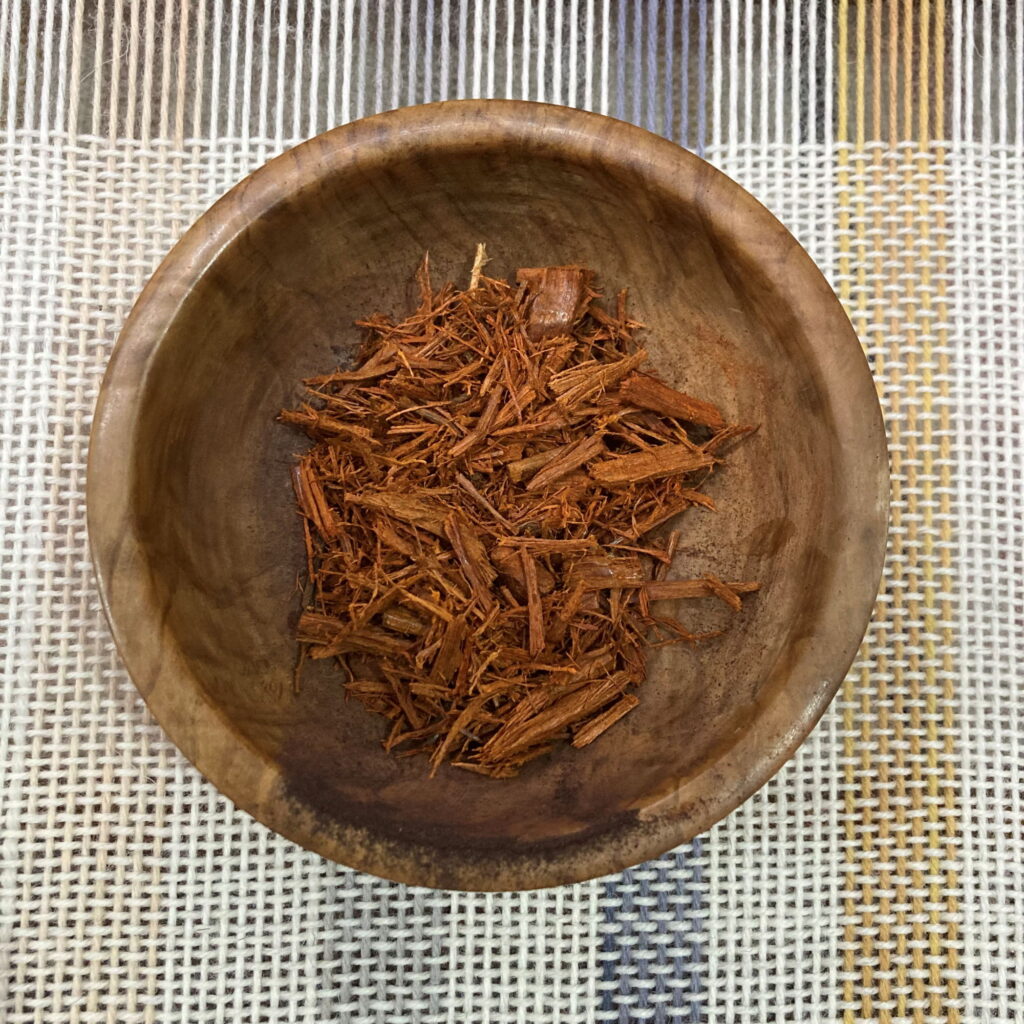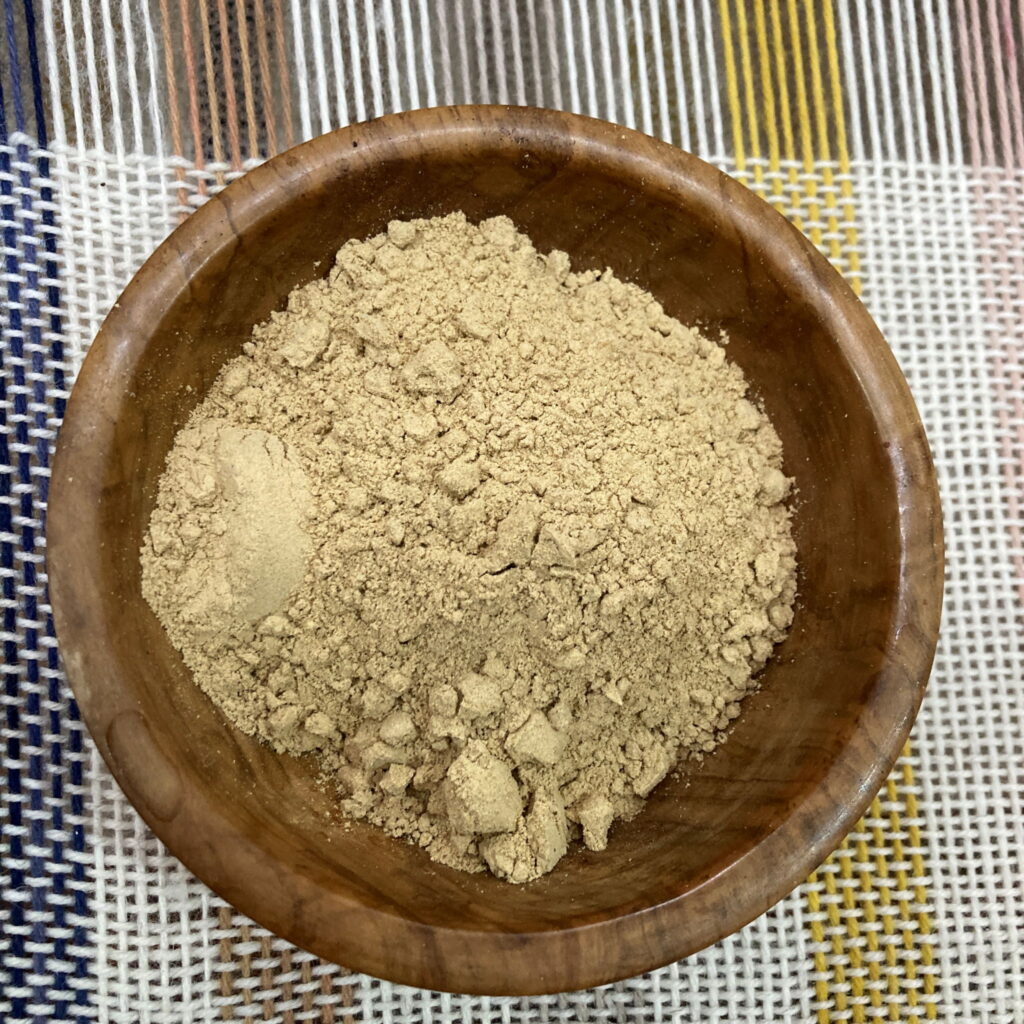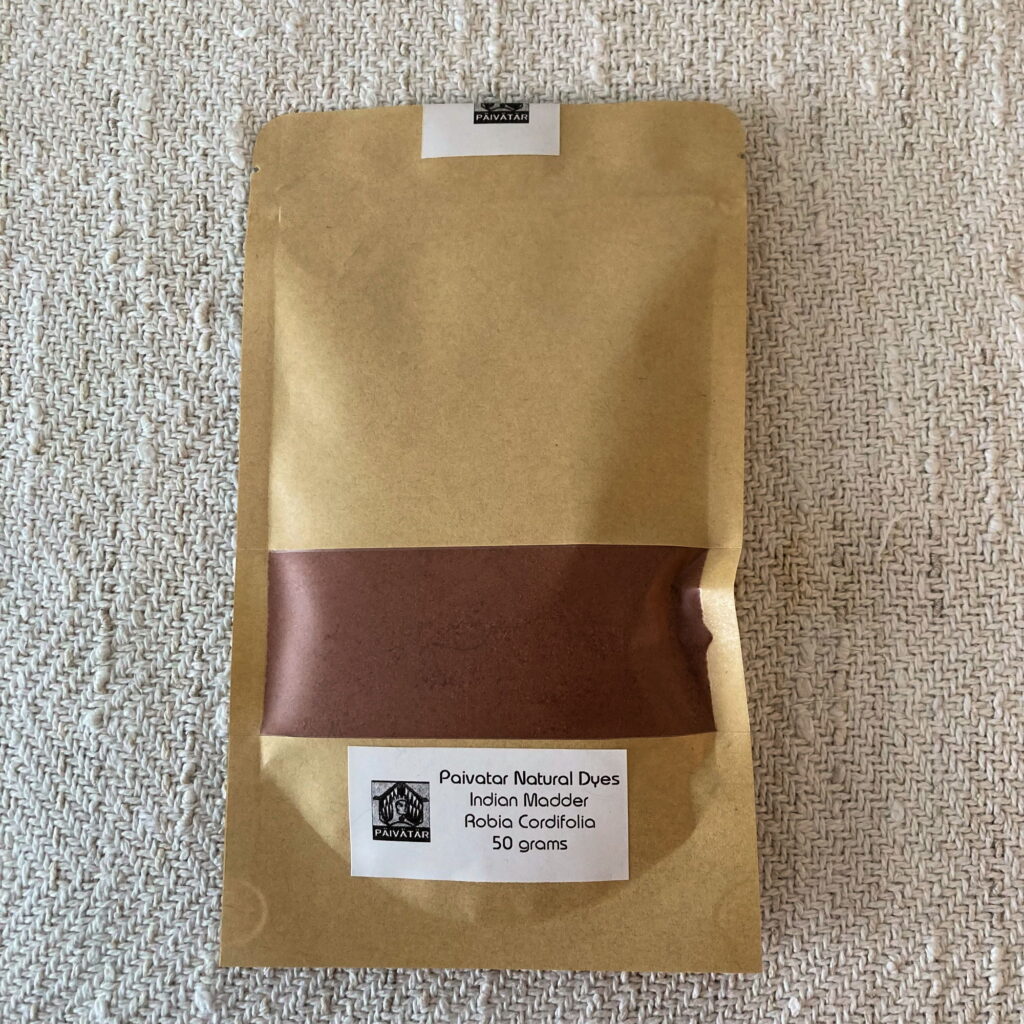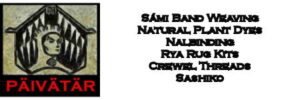Whenever you use dyes, there is always a health risk involved. Some dyes and mordants are poisonous, so use them with caution.
- Never use the same pots and utensils for dyeing that you use for cooking.
- Wear rubber gloves and use a face mask when measuring mordants and dyes.
- Work in a well ventilated area, preferably not your kitchen.
- Dispose of used mordants and dyebaths safely.
In the summer months, I do my dyeing outside. During the winter, I have a table set up in the laundry room. The occasional sock gets dyed an unusual colour sometimes, but that is better, I think, than making my family ill. Using natural dyes is not difficult, but takes some preparation. Any fiber that you dye must be clean, or you will be dyeing the wool grease and not the fiber. So scour it well, in hot, soapy water. And rinse out the yarn. With most natural dyes, it requires a 2 step process. The mordanting of the yarn and then the application of the dye. Many of the natural dyes also need some time to soak (overnight). I usually do this over a 2 day period. I mordant the yarns on the first day, prepare the dye solutions and then dye on the second day.
Natural dyes usually require the fiber to be soaked in a pre-mordant bath. The mordant prepares the fiber to receive the dyestuff, deepening, or changing the colour and making it more colourfast. I used about 1 lb. of yarn, winding off sample skeins, each approx. 10 yards in length. The day before I planned to dye, I pre-mordanted the yarn samples.
For this project, I am using 2 different mordants, to see what range of colours I will get.
- Use 10% Alum to weight of fiber
- Use 5% Tartaric Acid to weight of fiber
Weigh fiber and weigh out required mordants. Add mordants to a dyepot filled with hot water. Dissolve and add clean, wet yarn samples. Simmer for about an hour at 90 degrees Celsius. Remove the yarn and rinse well.
Tin Mordant
- Use .5% to weight of fiber
Weigh your fiber and the required amount of mordant. Dissolve the tin mordant in the hot dyebath of water. Add clean, wet yarn samples. Simmer for 1 hour. Remove the yarn and rinse well.
To save time, you can make larger baths of mordants and pre-mordant larger amounts of yarn, labelling them appropriately, so that they are ready when you want to do some dyeing.
Anti-microbial Effects of Natural Dyes
Plant Dyes and Your Health
Natural Dye Easter Eggs Recipes
Shop for Natural Dyes at Paivatar.com



Natural Dye Books
Wild Color, Revised and Updated Edition: The Complete Guide to Making and Using Natural Dyes
Botanical Colour at your Fingertips
The Modern Natural Dyer: A Comprehensive Guide to Dyeing Silk, Wool, Linen and Cotton at Home
A Weaver’s Garden: Growing Plants for Natural Dyes and Fibers
The Rainbow Beneath My Feet: A Mushroom Dyer’s Field Guide
Harvesting Color: How to Find Plants and Make Natural Dyes
A Heritage of Colour: Natural Dyes Past and Present by Jenny Dean (2014-06-10)
Wild Color, Revised and Updated Edition: The Complete Guide to Making and Using Natural Dyes
The Art and Craft of Natural Dyeing: Traditional Recipes for Modern Use
EBAY – NATURAL DYES
NATURAL DYES – US
NATURAL DYES – UK
 LONGTHREAD MEDIA VIDEO
LONGTHREAD MEDIA VIDEO
 LONGTHREAD MEDIA SUBSCRIPTIONS
HANDWOVEN MAGAZINE
PIECEWORK MAGAZINE
SPINOFF MAGAZINE
LEARN LONGTHREAD MEDIA
PAIVATAR HANDMADE
LONGTHREAD MEDIA SUBSCRIPTIONS
HANDWOVEN MAGAZINE
PIECEWORK MAGAZINE
SPINOFF MAGAZINE
LEARN LONGTHREAD MEDIA
PAIVATAR HANDMADE
 Paivatar on YouTube
Visit my YouTube channel for how-to craft videos.
Paivatar on YouTube
Visit my YouTube channel for how-to craft videos.
Or Please visit my Channel on Rumble for more how-to videos.
https://rumble.com/Paivatar
LIVE STREAMS - Paivatar Studio
KICK
TWITCH MAKERS&CRAFTING
YOUTUBE
Categories: How To, NATURAL DYES


